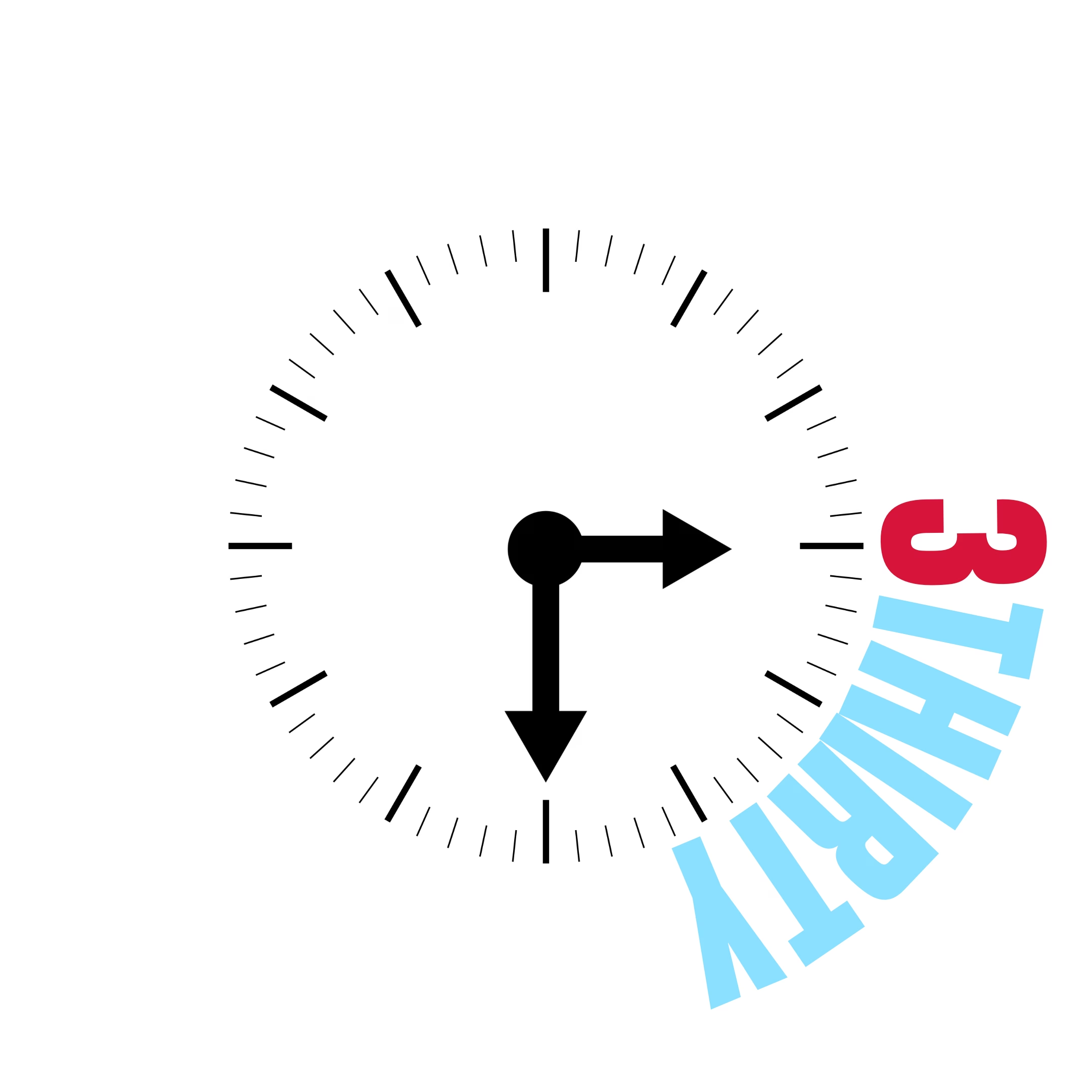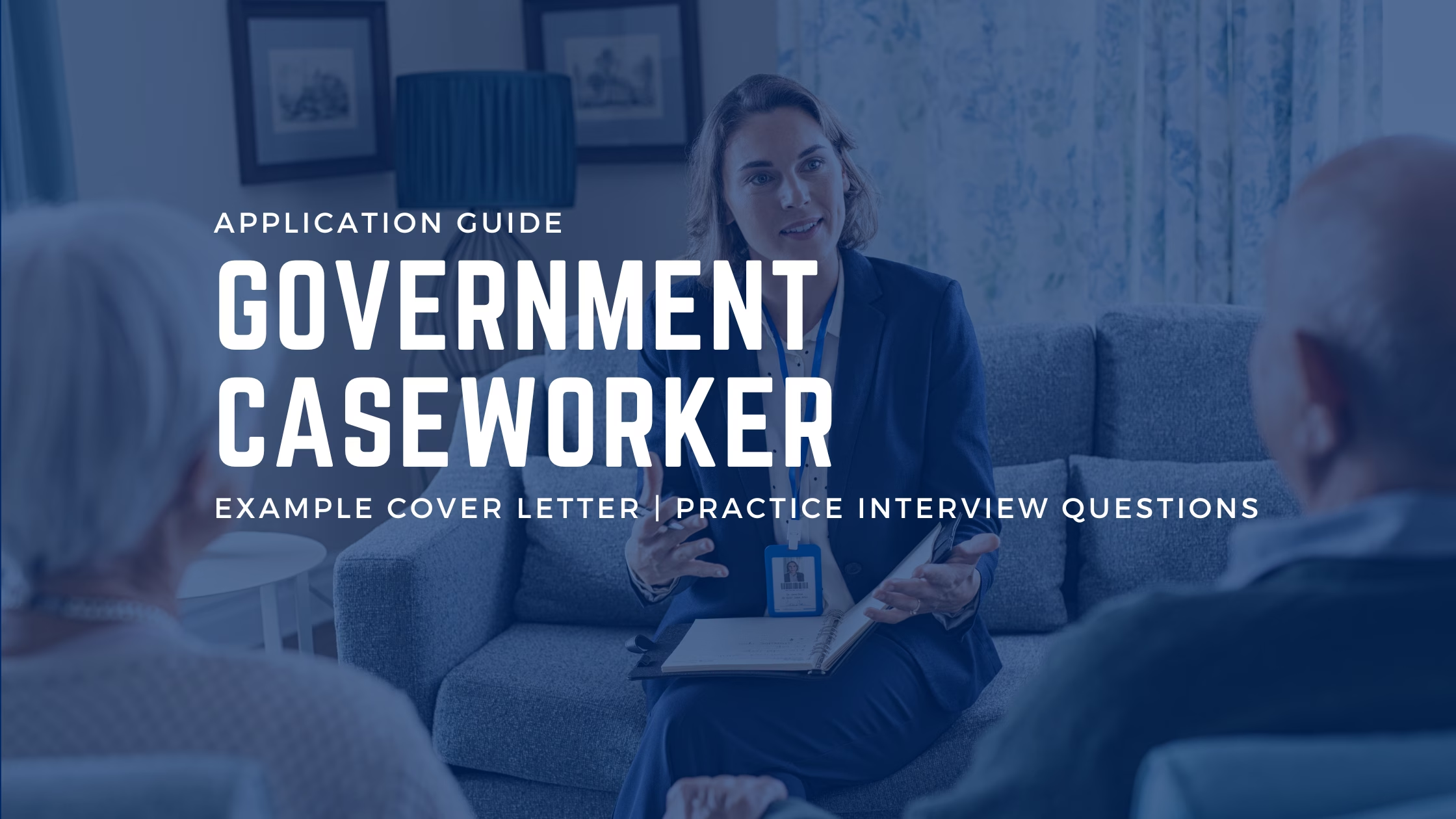Child protection caseworkers play a vital role within the Department of Communities and Justice, ensuring the safety and wellbeing of vulnerable children across various NSW locations. This government casework job involves assessing risk factors, collaborating within a multi-disciplinary program, and advocating for better outcomes in challenging family situations.
If you’ve ever considered a career in social caseworker roles or statutory child protection services, this article will guide you through everything you need to know. From salary details to key responsibilities, application tips, and an example cover letter—this comprehensive resource is designed to help you become a caseworker who makes a meaningful impact.
Roles are currently being recruited for state-wide, so read through the details below on exactly how to apply to start your caseworker career.
Have you ever wondered how child caseworkers can shape future generations? One of the biggest challenges for a child protection caseworker is balancing empathy with the rigors of legal and procedural requirements. Yet, the reward is immense: helping vulnerable children achieve safer, more stable lives.
If you’re new to public sector recruitment, get help on how to write a government cover letter here.
Looking at a different government job? You can request a custom application guide here.
Table of Contents
Child Protection Caseworker Salary and Overview
| Position Title | Child Protection Caseworker (JCPR) |
| Organisation/Entity | Department of Communities and Justice |
| Job Location | Statewide NSW (Ballina, Bathurst, Blacktown, Broken Hill, Coffs Harbour, and more) |
| Work Type (ongoing, temporary, or casual) | Full-Time |
| Base Pay | $87,315 – $113,562 + super and leave loading |
| Closing Date | 04/04/2025 – 11:59 PM |
Different Types Of Government Caseworker Jobs in NSW
This government casework job comes with the opportunity to make a real difference. A child protection caseworker provides critical social work support to children and families in crisis, performing risk assessments and collaborating with multi-disciplinary teams.
Social caseworkers across the state government perform a variety of roles:
Child Protection Caseworker: Works directly with children, families, and carers to assess risks and support family strengths. Helps improve children’s social, emotional, health, and educational outcomes while building lifelong connections.
Helpline Caseworker: Based in a contact centre, these caseworkers are the first point of contact for concerns about a child’s safety. They gather information from community members and professionals to determine if statutory child protection is required.
JCPRP Caseworker: Works within the Joint Child Protection Response Program alongside NSW Police and Health. Assesses safety and risk for children affected by serious physical abuse, sexual abuse, or extreme neglect, and supports families to create safer home environments.
Aboriginal Caseworker: Aboriginal and Torres Strait Islander caseworkers bring cultural knowledge and insight to improve services for Indigenous children, young people, and families. Applicants require at least two years’ experience working with Indigenous communities and a current driver’s licence.
The Department of Communities and Justice leads essential social services across the state, focusing on the welfare and protection of vulnerable children. In this role, a child protection caseworker operates within the JCPR (Joint Child Protection Response) framework to ensure child casework is handled effectively.
Caseworkers in this context must have strong analytical skills, an empathetic yet objective approach, and an understanding of statutory child protection laws. A significant part of your work will involve engaging with families, partner agencies, and other professionals to ensure everyone is aligned with the child’s best interest.
The Department of Communities and Justice supports continuous learning, offering specialised training in child protection, risk assessment, and multi-disciplinary collaboration. As a child protection caseworker, your days will be varied and meaningful. You’ll assess the safety and wellbeing of children and young people, gathering accurate information to make informed, evidence-based decisions. Your work will focus on building trust with families and carers, respecting each child’s unique cultural and personal context.
You’ll collaborate closely with partner agencies and stakeholders to deliver coordinated support, helping families make lasting, positive change. Along the way, you’ll maintain clear and objective records, contribute to a culture of ongoing learning, and engage in honest, sometimes difficult conversations to reduce risk and keep children safe. When needed, you’ll also take action in the Children’s Court to protect a child’s welfare. Throughout it all, your casework will be ethical, responsive, and centred on achieving the best possible outcomes for vulnerable children and young people.
Challenges for Child Protection Caseworkers
Working with vulnerable children in a government caseworker role can be emotionally demanding. Here are some key challenges:
- Complex Family Dynamics: Each child’s situation is unique and may involve intense conflict, neglect, or abuse, requiring nuanced interventions.
- Strict Deadlines & Procedures: Statutory child protection involves numerous regulations, and caseworkers must balance compassion with compliance.
- Collaborative Pressure: Partnering with multiple agencies—such as health, education, or law enforcement—adds complexity to day-to-day tasks.
- Emotional Resilience: Maintaining professionalism and self-care under stress is vital to sustain long-term success in a child casework environment.
Despite these challenges, the role is deeply rewarding for individuals committed to protecting at-risk children and assisting families in crisis.
Why Becoming A Child Protection Caseworker Is a Great Opportunity
Serving as a child protection caseworker doesn’t just offer a stable Government Job; it provides an avenue to influence generational change.
Here is why I think this particular recruitment is a great opportunity.
- Multiple Ongoing Opportunities: This is a state-wide recruitment to full many vacancies across NSW.
- Multiple Locations: Roles are available across NSW, including Ballina, Bathurst, Blacktown, Broken Hill, Coffs Harbour, Dubbo, Gosford, Inverell, Liverpool, Newcastle, Port Macquarie, Queanbeyan, Strawberry Hills, Tamworth, Wagga Wagga grouping (Wagga Wagga, Albury & Griffith), and Wollongong.
- Be Considered For Future Vacancies: You may also be placed into a government talent pool after this recruitment, meaning you can be considered for any new vacancies that arise in the next 18 months.
Application Requirements for Child Protection Caseworker
The Department of Communities and Justice provides a clear outline of what’s needed for candidates to demonstrate their suitability. From drafting an effective cover letter to highlighting statutory child protection experience, each requirement ensures that only the most dedicated and capable applicants proceed.
Child Protection Caseworker Application Process
To become a caseworker in this specialised field, you’ll need to submit:
- An up-to-date résumé (maximum of 5 pages)
- A cover letter (maximum of 2 pages)
- Response to the Target Question: Describe a time when you were required to undertake a safety and risk assessment for a child or young person. What steps did you take to complete this assessment, what were the challenges and what was the outcome?
Answering the target question is crucial. It demonstrates your knowledge of risk assessment, your approach to problem-solving in a multi-disciplinary program, and your overall readiness for casework responsibilities.
You’ll have the opportunity to answer the target question in your online application. I recommend that you prepare your answer in a word document first, then copy and paste the answer into the online form. You should also attach your answer in a separate document, as it will make it easier to ready for the hiring manager.
For more context on how to apply, remember that public sector recruitment focuses heavily on matching your experiences to the role’s requirements.
Government Caseworker Essential Role Requirements
To be considered, you need:
- At least two years of frontline experience in statutory child protection services or similar investigative roles
- A relevant degree in Social Work, Social Science, or Welfare (final semester students must complete their degree before starting)
- Highly developed communication, risk assessment, and analytical skills
- A valid driver’s licence (P1 or above) and paid Working With Children Check
While not always mandatory, the Department of Communities and Justice often looks for applicants who can demonstrate:
- Strong rapport-building abilities to collaborate with other caseworkers and partner agencies
- Experience in multi-disciplinary or cross-agency collaboration
- Flexibility and adaptive problem-solving approaches in high-pressure environments
What to Include in Your Government Cover Letter
Your cover letter should reveal why you’re an ideal fit for a child protection caseworker role.
Keep your cover letter aligned to what is asked for in the job ad. Specifically, make sure you clearly meet the essential role requirements list above.
You should focus on your experience working in front-line statutory child protection (or similar role) and give real examples to demonstrate strong attention to detail, highly developed critical thinking and problem solving, and excellent interpersonal and self-management skills.
If you are struggling with your cover letter, you can use this free template and then get your cover letter reviewed by an expert.
Government Caseworker Application Checklist
To stay organised and ensure you don’t miss any vital steps, here is a condensed checklist you can use:
| Review the official job ad and note all essential requirements |
| Tailor your résumé to highlight relevant statutory child protection experience |
| Write a targeted cover letter (use a free template at Cover Letter Templates) |
| Get your cover letter reviewed (only $29) |
| Address the Target Question in detail, applying the STAR technique |
| Submit your application before the closing date |
Candidate Profile for Caseworker Role
Meet Monique, a dedicated social caseworker with two years of experience in a government casework job. Monique holds a Bachelor’s in Social Work and has spent her early career assisting at-risk youth in a non-profit agency setting. She’s ready to take on the unique responsibilities of child casework within a multi-disciplinary program.
Monique is seeking a NSW government job that aligns with her passion for supporting vulnerable children. Driven by a desire to expand her risk assessment skills and work alongside professionals from various agencies, she sees the child protection caseworker role as the perfect step forward. Her motivation stems from a mix of personal values and professional ambition—she’s eager to help families navigate challenging situations while growing her expertise in statutory child protection.
Example Cover Letter For Child Protection Caseworker
Click here to download a free public sector cover letter template.
Dear Hiring Manager,
I am writing to apply for the Child Protection Caseworker (JCPR) position with the Department of Communities and Justice.
Having dedicated two years to supporting vulnerable children within a statutory child protection environment, I am eager to continue serving at-risk families through a multi-disciplinary program that values collaboration, empathy, and results. This opportunity aligns with my background, passion for government casework, and commitment to making tangible differences in our community.
I have a high level of attention to detail. For example in my previous role at a community welfare organisation, I was responsible for compiling case information for a comprehensive family services report. I needed to gather data from multiple sources— including child behaviour records, school reports, and medical evaluations— ensuring no discrepancies or missing details would hinder the final assessment.
I created a highly organised spreadsheet that tracked each piece of data. I cross-referenced that spreadsheet with daily updates from the school counsellor and social workers to ensure each document matched the child’s timeline and circumstances. By verifying consistency across all sources, I produced an accurate, evidence-based report that allowed the intervention team to implement the right support plan without delay. This level of attention helped reduce errors and ultimately provided a safer environment for the child.
In my previous role, I consistently applied critical thinking and problem-solving skills to complex child protection cases. One example involved managing a case of three siblings who were at risk of neglect, each with different needs and vulnerabilities. The parents were in conflict over how to care for the children, which created tension and delayed meaningful progress. It was my responsibility to de-escalate the situation, assess each child’s risk level, and develop a practical solution that prioritised their immediate safety and wellbeing.
To do this, I drew on statutory child protection guidelines and took a structured, multi-faceted approach. I reviewed each child’s medical and educational records, conducted individual interviews to understand their unique circumstances, and facilitated a meeting with a family mediator. Through this process, I was able to identify the underlying causes of the parental conflict and propose clear, realistic actions tailored to each child’s needs. The resulting care plan included scheduled medical check-ups, stable daycare routines, and ongoing family counselling. Both parents agreed to the plan, and within weeks, we observed improved cooperation and a safer, more stable environment for the children.
Throughout my career, I have relied on strong interpersonal skills to build rapport and trust with families, children, and key stakeholders. One example involved a complex case where a child had been removed from their home following allegations of physical abuse. I was required to engage not only with the child but also with their extended family, school staff, and health professionals—all of whom had differing perspectives on the situation.
I approached each interaction with empathy, openness, and respect, ensuring that every person involved felt heard and understood. I used clear, transparent communication when discussing the concerns and next steps with the child’s parents, while also maintaining professional boundaries. By fostering trust and encouraging honest dialogue, I was able to facilitate productive conversations that ultimately led to the family engaging in counselling and developing a safe plan for the child’s return home. This outcome would not have been possible without the strong relationships I built throughout the process.
In child protection casework, self-management is essential to maintaining high-quality service delivery under demanding circumstances. In a previous role, I experienced a period where my caseload significantly increased due to unexpected staff absences. I was responsible for managing multiple complex cases simultaneously, all requiring urgent assessments and detailed documentation.
To ensure I maintained a high standard of work, I implemented a clear system to prioritise tasks based on risk and time sensitivity. I created daily and weekly checklists, allocated time for each case’s critical tasks, and communicated proactively with my supervisor about workload pressures. I also maintained healthy boundaries outside of work to manage stress and sustain performance over time. As a result, I was able to meet all deadlines without compromising the quality of my assessments or the support I provided to children and families. My ability to self-manage effectively ensured that vulnerable children continued to receive timely and appropriate interventions.
These experiences exemplify the wide-ranging skills I bring to a Child Protection Caseworker position—skills that ensure child safety, foster collaborative solutions, and maintain professional standards under challenging circumstances.
I have also attached my response to the target question.
I look forward to the opportunity to contribute in a capacity where I can continue to protect the welfare of children, support families in crisis, and collaborate within a dynamic, multi-disciplinary team.
Thank you for your time and consideration.
Sincerely,
Monique
Target Question: “Describe a time when you were required to undertake a safety and risk assessment for a child or young person. What steps did you take to complete this assessment, what were the challenges and what was the outcome?”
Several months ago, I was allocated a case involving a ten-year-old child who was suspected of experiencing physical abuse at home. The referral came from the child’s school, who had noticed bruising on the child’s arms and back that did not match the explanation provided by the parents. As the allocated caseworker, I was responsible for conducting a thorough safety and risk assessment to determine whether the child was at immediate risk of harm and what protective actions were required.
In line with statutory child protection procedures, my first step was to gather all available information to inform my assessment. I liaised with law enforcement to check for any relevant history or previous reports involving the family. I also made contact with the child’s school and previous service providers to obtain background information that could help contextualise the concerns.
Next, I arranged to interview the child in a neutral, safe environment where they would feel comfortable speaking openly. I used age-appropriate, trauma-informed questioning techniques and maintained a calm, supportive approach to encourage the child to share their perspective. Initially, the child was hesitant and reluctant to talk about what had occurred, which is not uncommon in cases of suspected abuse. I ensured that the child felt heard and reassured them that my role was to help keep them safe. Over the course of the interview, the child disclosed worrying details that raised further concerns about their physical and emotional safety at home.
Following the interview, I engaged medical professionals to conduct a detailed assessment of the child’s injuries. Their clinical observations confirmed that the bruising patterns were consistent with inflicted harm, supporting the concerns raised by the school and the child’s own disclosures.
A significant challenge in this case was the family’s defensiveness and lack of cooperation. Both parents initially provided conflicting accounts of how the child sustained the injuries and were resistant to external involvement. I recognised that building rapport with the family was essential to progressing the assessment and achieving a safe outcome for the child. I maintained open, honest, and non-judgmental communication with the parents throughout, clearly explaining the statutory child protection process and reinforcing that the primary focus was the safety and wellbeing of their child.
Based on the information gathered from all sources—including the child, school, medical professionals, and parents—I completed a comprehensive risk assessment. I identified significant and immediate risks of further harm if the child remained in the home without protective interventions. I worked collaboratively with my team and partner agencies to develop an appropriate safety plan.
The outcome was that the child was temporarily placed in safe, alternative care while the parents engaged in counselling and support services to address the underlying factors contributing to the situation. The safety plan also included regular supervised contact between the child and their family, with ongoing risk monitoring and scheduled reviews. Throughout the process, I ensured that the child’s voice remained central to decision-making, and I advocated strongly for their needs and preferences to be considered at every stage.
Ultimately, the safety and risk assessment I conducted led to a well-informed, balanced response that prioritised the child’s immediate safety while also providing the family with the opportunity to address their circumstances and work towards reunification under safer conditions.
Explain the STAR Technique
The STAR technique is a structured way to articulate your experiences and accomplishments, particularly crucial in public sector recruitment. STAR stands for:
- Situation: Provide context for the scenario you faced.
- Task: Outline your role and the goal or responsibility you held.
- Action: Describe the specific steps you took to address the situation.
- Result: Share the outcome, emphasising measurable or clear improvements.
In the example cover letter above, you can see distinct STAR examples detailing how the caseworker meets the requirements of the role.
How to Prepare for a Public Sector Interview
Preparing for an interview in the NSW Public Sector means demonstrating key focus capabilities rather than just listing qualifications. Follow these tips:
- Review the Focus Capabilities: Carefully read the role description to understand the behaviours and skills the panel is looking for.
- Brainstorm Examples: Jot down real-life scenarios from your professional or volunteer experiences that align with each capability, particularly in statutory child protection.
- Match to Indicators: Show how your examples address specific requirements like risk assessment, effective communication, or multi-agency collaboration.
- Use the STAR Method: Structure each interview answer to keep it clear and relevant.
- Practise & Use Notes: If you’re permitted to bring notes, organise them in bullet points to quickly reference. Otherwise, rehearse thoroughly so you can be confident and concise.
Possible interview questions might include:
- “Describe a complex case and how you worked with multiple agencies to ensure a positive outcome.”
- “Explain a time you had to manage conflict within a family dynamic.”
- “How do you prioritise your workload when you have multiple cases?”
For this role, most of the focus capabilities are at the Intermediate Level. To properly prepare for the interview, make sure you download the Intermediate Level public sector interview questions and answers workbook to explore sample responses and refine your interview technique.
Prepare your Caseworker Application
Ready to apply? Click here to apply for the Child Protection Caseworker position.
If you’ve already drafted your résumé and are putting finishing touches on your cover letter, remember that the quickest way to elevate your application is to have your cover letter professionally reviewed. Get your cover letter reviewed here for only $29, and dramatically boost your chances of success!
Looking to apply for a different job in the public sector? You can request a custom application guide here.





